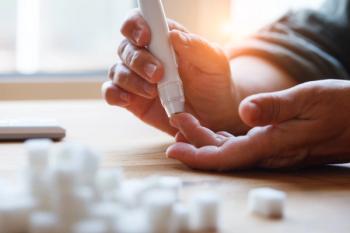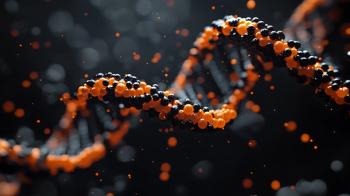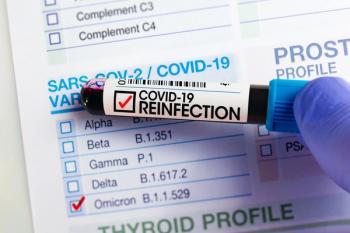
- October 2022
- Volume 88
- Issue 10
Case Studies: Menopause
Case 1: Hot Flashes
Q: MK is a woman aged 52 years whose menstrual periods have gradually stopped, with none during the past year. Her most common symptoms of menopause were hot flashes, which presented as a sudden feeling of warmth, especially on her chest, face, and neck. MK said the hot flashes sometimes caused her to sweat. They have occurred overnight and caused sleep disturbances. MK has had trouble functioning at work and at home. However, she does not wish to take medication and asks about lifestyle modifications to help her overcome these symptoms. What information should the pharmacist provide?
A: MK’s vasomotor symptoms are the most common signs of menopause and are mediated by thermoregulatory dysfunction occurring in the hypothalamus because of estrogen withdrawal. The warmth she feels is the result of peripheral vasodilation, which increases blood flow to the skin. Shortly after having a hot flash, MK may even experience shivering as her body attempts to restore the core temperature.1
The pharmacist should advise her to dress in layers that are easy to remove and keep indoor temperature cool with air conditioning and fans. MK should avoid triggers leading to hot flashes, including spicy foods and stressful situations. At the onset of a hot flash, she should practice deep, slow breathing. Risk factors for hot flashes include drinking alcohol and caffeine, being sedentary, obesity, and smoking. Other ways of managing hot flashes include meditation, tai chi, and yoga.2
Case 2: Vaginal Dryness
Q: SN is a woman aged 57 years. She is experiencing vaginal dryness, along with cessation of menstruation and some mild hot flashes. She is seeking nonpharmacologic treatment options. What should the pharmacist advise?
A: Vaginal dryness is a symptom of vaginal atrophy secondary to menopause. As such, a pelvic examination is recommended for women experiencing dyspareunia, sexual dysfunction, or vaginal dryness to assess the etiology and rule out cancer and infections. If SN’s medical provider recommends first-line nonhormonal vaginal lubricants and moisturizers, the pharmacist can advise OTC products. Although vaginal lubricants and moisturizers may provide symptomatic relief, SN may still need a prescription hormonal treatment.3
The pharmacist should counsel SN about the difference between lubricants and moisturizers. Lubricants have a base of oil, silicone, or water, and should only be used during sexual activity. Some commercially available brands include Astroglide, Elegance Woman’s Lubricant, ID Millennium, K-Y Jelly, and Pjur. Inform SN that oil-based lubricants can cause a breakdown of latex condoms.Moisturizers are made with hyaluronic acid and should be used routinely, about 2 to 3 days per week. Some commercially available moisturizer products include K-Y Liquibeads, Replens, and Vagisil moisturizer.4
Case 3: Black Cohosh
Q: MA is a woman aged 53 years who has questions about herbal supplements. She has been experiencing hot flashes and has not found relief. MA has read that black cohosh (Actaea racemose) may be a natural remedy for menopausal hot flashes. What information should the pharmacist share with MA?
A: Black cohosh is derived from a root and is commercially available as Remifemin. Black cohosh extract is usually taken as 40 mg in 1 or 2 doses per day. The exact mechanism of action is unknown, and there have been mixed reports of efficacy in mitigating menopausal hot flashes. It is known that black cohosh does not have estrogen-like properties. The American College of Obstetrics and Gynecologists guidelines report the evidence is not sufficient to support natural products for menopause. Large randomized clinical studies are needed to provide additional information regarding efficacy.5,6
Black cohosh has an overall good safety profile, with minor adverse effects including gastrointestinal complaints, headaches, rashes, and weight gain. There have been some case reports of hepatitis after using black cohosh, but no causal relationship has been established. Because of a lack of long-term safety data on black cohosh, use beyond 6 months is not recommended.4-6
Case 4: Evening Primrose Oil
Q: KN is a woman aged 54 years who asks about evening primrose oil (Oenothera biennis), because her friends have been using this supplement for relief from hot flashes. What information should the pharmacist share?
A: Evening primrose oil is widely used by women to treat menopausal hot flashes. Evening primrose oil is rich in ω-6 fatty acids, including linolenic acid. It is considered effective because of its anti-inflammatory processes. Two to 4 g of evening primrose oil per day is given as a capsule or liquid by mouth. Although well tolerated, evening primrose oil can cause adverse effects such as abdominal pain, diarrhea, headaches, or nausea. Additionally, individuals taking anticonvulsant medications should avoid evening primrose oil, because it has been associated with seizures.7,8
References
- Freedman RR. Physiology of hot flashes. Am J Hum Biol. 2001;13(4):453-464. doi:10.1002/ajhb.1077
- Freedman RR. Hot flashes: behavioral treatments, mechanisms, and relation to sleep. Am J Med. 2005;118(suppl 12B):124-130. doi:10.1016/j.amjmed.2005.09.046
- Gandhi J, Chen A, Dagur G, et al. Genitourinary syndrome of menopause: an overview of clinical manifestations, pathophysiology, etiology, evaluation, and management. Am J Obstet Gynecol. 2016;215(6):704-711. doi:10.1016/j.ajog.2016.07.045
- ACOG practice bulletin No. 141: management of menopausal symptoms. Obstet Gynecol. 2014;123(1):202-216. doi:10.1097/01.AOG.0000441353.20693.78
- Leach MJ, Moore V. Black cohosh (Cimicifuga spp.) for menopausal symptoms. Cochrane Database Syst Rev. 2012;2012(9):CD007244. doi:10.1002/14651858.CD007244.pub2
- Ulbricht C, Windsor RC. An evidence-based systematic review of black cohosh (Cimicifuga racemosa, Actaea racemosa) by the Natural Standard Research Collaboration. J Diet Suppl. 2015;12(3):265-358. doi:10.3109/19390211.2014.946731
- Bayles B, Usatine R. Evening primrose oil. Am Fam Physician. 2009;80(12):1405-1408.
- Izzo AA. Interactions between herbs and conventional drugs: overview of the clinical data. Med Princ Pract. 2012;21(5):404-428. doi:10.1159/000334488
About the Authors
Rupal Patel Mansukhani, PharmD, FAPHA, CTTS, is a clinical associate professor at Ernest Mario School of Pharmacy at Rutgers, The State University of New Jersey in Piscataway, and a transitions-of-care clinical pharmacist at Morristown Medical Center in New Jersey.
Ammie Patel, PharmD, BCACP, is a clinical assistant professor of pharmacy practice and administration at Ernest Mario School of Pharmacy at Rutgers, The State University of New Jersey in Piscataway, and an ambulatory care specialist at RWJBarnabas Health Primary Care in Shrewsbury and Eatontown, New Jersey.
Articles in this issue
about 3 years ago
October Fun Factsabout 3 years ago
October Pet Peevesabout 3 years ago
Investigators Suggest Conjunctivitis May Transmit Monkeypoxabout 3 years ago
Women Pharmacist Day Focuses on Achievements in the Professionabout 3 years ago
October Generic Product Newsabout 3 years ago
Pharmacists Play Pivotal Role in Increasing Awareness of Prediabetesabout 3 years ago
October Generic Focusabout 3 years ago
Federal ECHO Act Helps Goal of Health EquityNewsletter
Stay informed on drug updates, treatment guidelines, and pharmacy practice trends—subscribe to Pharmacy Times for weekly clinical insights.


















































































































































































































